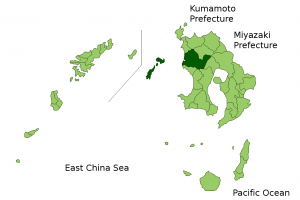
Key City Shimada 島田市

By the end of the following century, Shimada became much more important as a post stop on the famous Tokaido Road, but it wasn’t until the late 1800’s that crossing the Oi River became safe. A popular folk song from that era says:
Even horses can cross eight ri of Hakone, but the Ōi River is hard to get over in any way.
One of the first acts of the new Emperor after the Meiji Revolution was to build what would become the world’s longest (over half a 
Today, the city is much different. Known for its textile manufacturing and green tea production, it’s a prosperous, safe place to live and work. But these 100,276 people don’t realize the danger they are in spiritually. They need someone to go to them and build a bridge unlike any they’ve ever seen before. Shimada needs the Gospel now. Not tomorrow, not next week, not a year from now, they need Christ now! People die everyday, and they spend an eternity in one of two places. Would you pray and ask God if He wants you to be a missionary to this city?
Key City Chikushino 筑紫野市

Futsukaichi Onsen is a popular hot spring on 
There are many other legends about the origins of hot springs that involves advice by Buddha, and that they would heal diseases. All this Reminded me of John 5 “Now there is at Jerusalem by the sheep market a pool, which is called in the Hebrew tongue Bethesda, having five porches. In these lay a great multitude of impotent folk, of blind, halt, withered, waiting for the moving of the water.” At the same pool lay a diseased man that had been waiting to be healed for 38 years. I’d imagine he had searched many places for a cure to his disease. Its hard to think of the despair he must have faced, never finding that which would make him whole, always struggling and never arriving at the pool in time. That is, until Jesus came! Jesus cured the man, making him whole!
Can you see it? Can you see the great multitude of impotent folk? The Blind? The Halt and Withered?
Those that are doomed in their sins, never finding the cure, always struggling and never arriving? How large a multitude! They fill the world! They turn to Buddha, Shinto, or nature for relief from their disease, yet neverfinding lasting satisfaction! There is one hope for them! Only one! Jesus! When is the last time you told someone about Him?

